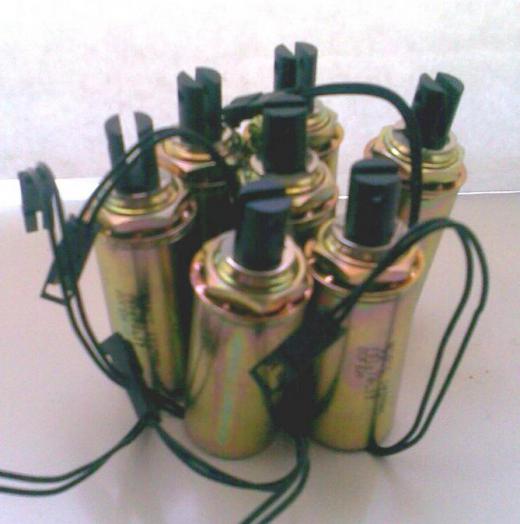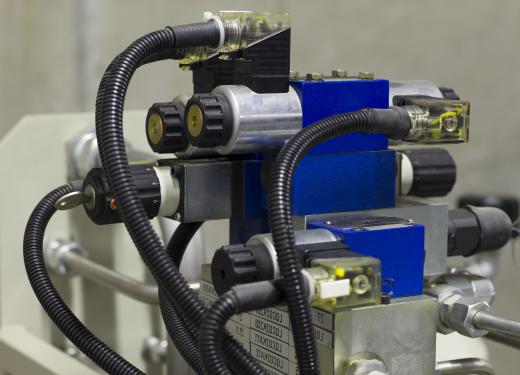Solenoids are arguably one of the most common sources of reliable and efficient remote actuation available and are used in an almost endless list of day-to-day applications. Part of the attraction of their use is the relative simplicity of solenoid wiring and installation, with few relevant restrictions and rules of thumb existing. Solenoids can be successfully installed if a suitable power supply is available, the correct grade of wiring is used and the manufacturer's connection instructions are followed. The control section of solenoid wiring is typically the most complex part of the circuit and, if not already present, can require some careful planning and a degree of electrical knowledge. The correct selection of a solenoid for the particular application also is critical and can, if not considered with care, cause impaired efficiency, solenoid failure or hazardous operational conditions.
Virtually every area of industrial, domestic and hobby endeavors features at least a solenoid or two. These little electromagnetic workhorses supply millions of duty cycles in a wide variety of applications and industries. They are particularly attractive in their role as remote actuators, at least in part because of their latent simplicity. Solenoid wiring typically is a simple, two-wire system consisting of power feed and return wires connected to the solenoid coil, interrupted at some point by a control circuit trigger mechanism. If a few basic principles are adhered to, solenoid wiring is uncomplicated and can be successfully installed by people who have little or no electrical knowledge.

A solenoid consists of a single electrical component, namely its coil. The coil requires only the connection of two wires running to the live and neutral points of the power supply in the case of an alternating current (AC) solenoid or the positive and negative points of a direct current (DC) example. This basically will supply the electrical current required to energize the coil and activate the solenoid and requires only that the wires are of the correct current, the correct temperature rating and a sufficient length. It also is wise for users to always follow the manufacturer's connection instructions closely. Of course, it generally is not desirable to have the solenoid energized all the time, so some sort of control circuit needs to be built into the solenoid wiring.

Typically, the main component of the control section of any solenoid wiring setup consists of a simple open and closed contact or switch. This might be a simple push button, the normally open contact of a relay or part of a more sophisticated programmable controller, and it might also include timer or interlock functions. If the solenoid installation is a new project, this will require some degree of electrical knowledge to plan and construct this part of the circuit. If the solenoid is a replacement in an existing installation, then the only work that is typically required is re-connecting the coil. In simplistic terms, though, all the control circuit does is energize and de-energize the coil when required.
One of the most important factors that one should consider when approaching a solenoid wiring job is the rating of the solenoid itself. The solenoid must be large enough to handle the workload involved, with a slight excess in capacity to ensure longevity of the equipment. The coil also needs to be suitable for the power supply, and vice versa, both in terms of voltage and AC/DC ratings to avoid possible damage or destruction of both the solenoid and its actuated mechanism. When the solenoid is to be installed in a hazardous environment, such as in explosive atmospheres, a suitable flameproof solenoid must be used to prevent explosions or fire.
